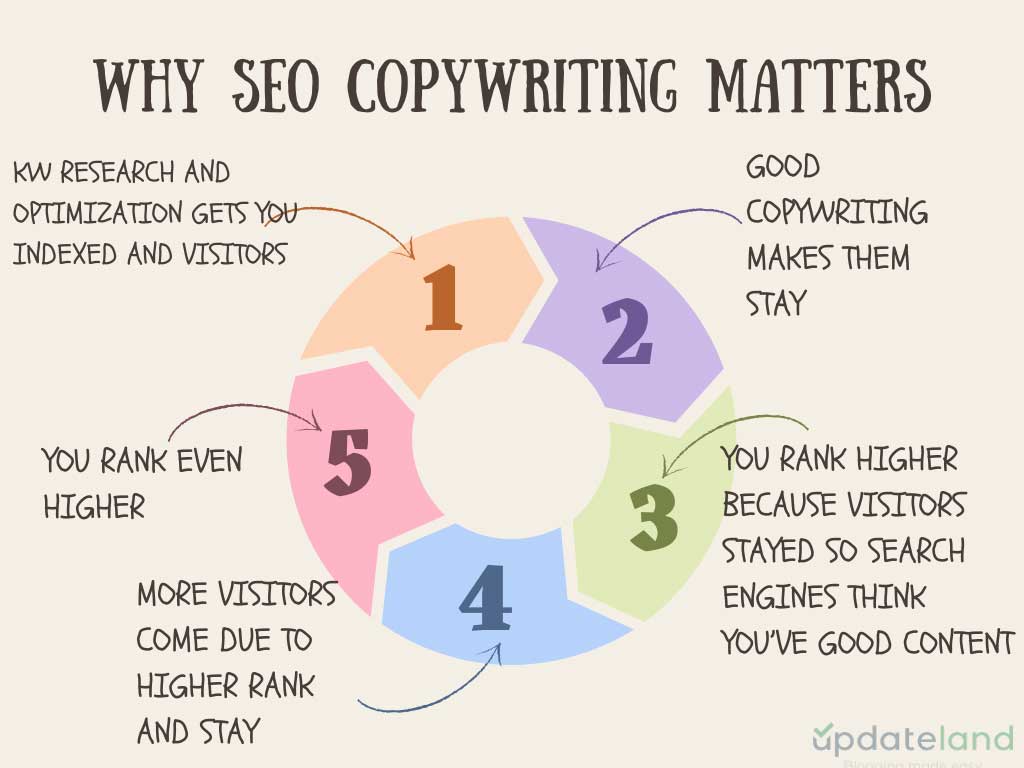SEO Copywriting is so much different from “writing an article”. If you’ve written a really good article(s) and they aren’t ranking, this piece is for you.
Throughout this piece, we will discuss what SEO copywriting is and why it’s essential for SEO.
Yes, this isn’t just an informative guide. I’ve tried my best to make it actually useful and practical. The exact ingredients that go into SEO Copywriting, what not to do and how it all works, everything is being discussed.
Let’s get started.
Table of Contents
What is SEO Copywriting?
Before we discuss how it affects your website’s visibility, you need to know what it is, don’t you?
It’s primarily made of two words- SEO and Copywriting. The SEO part of things covers search engine optimization. Meaning, your article must have the right technical inputs to attract search engines.
The “Copywriting” covers exactly what you think it does, writing that’s attractive to humans.
So, in simpler words, SEO Copywriting is just content that’s both SEO-optimised as well as truly informative, helpful and just attractive for humans.
Do note that SEO Copywriting isn’t independent. Without other technical aspects such as URL structures, user-interface, mobile-friendliness etc. your copywriting wouldn’t matter.
What are the primary elements of SEO Copywriting?
You can understand SEO Copywriting’s role in website visibility only once you understand what elements it’s made up of. These are literally the reasons that make it as important as it is.
So, let’s break it down for easy understanding (yes, this is exactly what SEO Copywriting is):
The SEO side of things
Finding the right keywords: You must find the right keywords to work with. They must have good search volume, and yet low on competition. It’s better if they haven’t been covered by your competitors yet.
Finding the right secondary keywords and LSIs: The primary keyword is just step 1. You need secondary keywords and other similar, contextual keywords to make your point clearer. Long tail keywords and question keywords help as well.
Keyword optimization: This is basically telling the search engines what your article is about, without overemphasising it. Your keyword must be at the right places but without repeating itself. It’s good to use the keyword in your first and last paragraphs. Using the same keyword multiple times is called “keyword stuffing” and is something that may get you flagged.
Headline and meta optimization: Your article must have atleast one H2 headline. The headline also should preferably contain your primary keyword. You must also optimise the meta description. This is the description search engines use in their search results, as a preview just below your website’s listing.
The human/Copywriting side of things
Good readability: This is simply the ease with which your article can be read. There are various ways to do this. Keeping sentences short is a good start. Using simpler words and active voices help your readers understand your content better as well.
Actually informative/new content: Your visitor must learn something new from your content. The less generic/vague it is, the better. As an example, in this article, I’m trying my best to explain things instead of simply giving you bullet points.
Visual inputs: Visual content has been found to be 43% more engaging than text! That’s enough reason to start incorporating images, data, and just more visual content, isn’t it?
Why SEO Copywriting is Essential for Boosting Your Website’s Visibility
Okay, now that you’ve got an idea what SEO Copywriting is, let’s see why it’s essential for your website’s visibility.
So, both parts of the phrase (SEO and Copywriting) are interlinked. They impact each other.
If your article has the right words, in the right density, at the right places, it tells search engines what it’s about. Of course, other optimizations matter as well such as URL structure, meta description, and alt tags matter as well.
Anyway, once search engines know what it’s about, it shows your article to visitors. Not at the top positions but it does display you lower on the list.
This is where the “Copywriting” part comes in. When users visit your page, no matter how many or how few, they will either read your article or hit the back button. If they stay and read your article, they’re telling search engines that your article is good. If they hit back, that’s of course a red flag saying your article wasn’t good enough.
So, the core here is, the longer you can keep users engaged on your website, the more search engines like your website. The more search engines like your website, the higher you rank and more visitors you get. You see the cycle, don’t you?
What other things does SEO Copywriting consist of?
If you thought it was only about keywords, you’re wrong. The end goal is to make visitors stay. And that requires a lot more efforts.
So, for search engines, metrics like “time on site” (how much time a visitor spends on your site on average), “page visits” (no. of pages a user visits on your website), and “bounce rate” matter.
Hence, you’d need to have a really good website design, user-interface, navigational layout and everything else. If you’ve got error pages, broken links, or just a confusing layout you’d lose visitors, despite world-class articles.
Conclusion- Why is SEO Copywriting essential?
That’s the length and breadth of it folks. SEO Copywriting is just crafting articles that are loved both by search engines, as well as humans. It’s the first step that gets you your first few visitors and makes them stay. If they stay, you get ranked higher which results in more traffic, as simple as that.
And yes, as explained earlier, everything is interdependent. Without one another, no individual optimization or writing skill could get you ranked.
Hence, make sure your article is properly optimized but you also take care of the on-page and technical SEO aspects.
